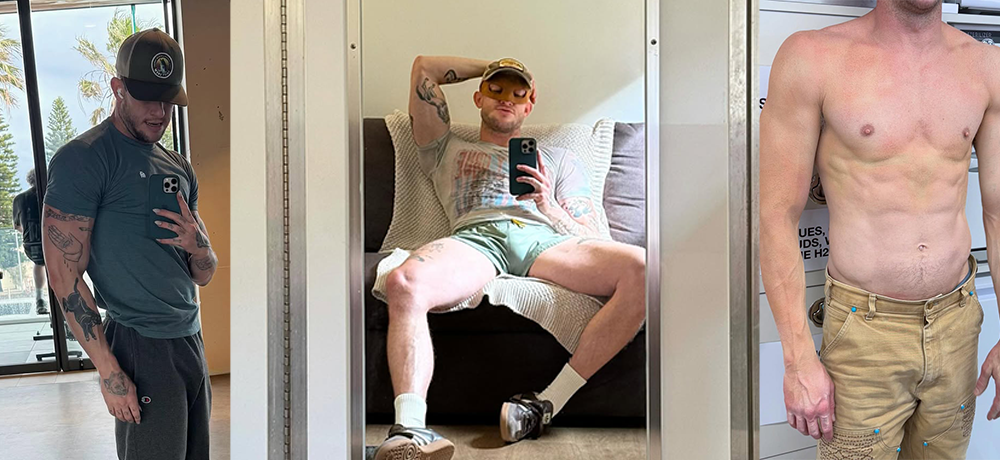
The long way around
In November last year Sydney Star Observer received a letter about an HIV-positive English gay man who was allegedly refused residency in Australia because of his serostatus.
According to the letter, Paul had been in a relationship with an Australian citizen for the last six years and earns heaps and has years of probable health and prosperity ahead, but was denied entry nonetheless.
Paul’s experience is distressing and tragic but probably not surprising for many readers, especially given that a blood test for HIV is part of the process of applying for residency. A common assumption is being HIV-positive means the doors are closed.
Solicitor David Puls says this isn’t the case, and the example of (let’s call him) English Paul is the exception rather than the rule. For those applying for spousal interdependency visas, a health waiver means success in most cases, but only after a long
and complicated process.
I don’t want the wrong message to be out there that if you’re the HIV-positive partner of an Australian citizen, that the two of you should give up and go back overseas, Puls says.
Puls is the principal solicitor at the HIV/AIDS Legal Centre (HALC) and successfully represented seven positive people who have been granted residency in Australia since December last year alone.
But success doesn’t come easily.
Applicants are of course tested for HIV. Being HIV-positive is not necessarily a barrier, but the Department of Immigration and Multicultural and Indigenous Affairs (DIMIA) has to determine whether the applicant’s HIV status constitutes a significant cost to Australia.
The applicant is then obliged to convince the department that this significant cost is not undue given the person’s circumstances.
According to Puls, most applications by positive people are refused at this stage.
The next step is to pay $1,400 and wait a further 18 months (or so) to appeal the decision with the Migration Review Tribunal, a group which often overturns the original ruling made by DIMIA. The overall process can take an average of three years.
I think something that really, really can’t be underestimated in these cases is the amount of stress this puts on a relationship, Puls says. You have couples that would otherwise be normal healthy happy couples that end up fighting and having all sorts of problems, just because of the length of time that it takes.
Canadian positive guy Brent Allan met partner Paul Kidd (an Australian) in 1999. Allan was finally awarded his partnership visa this month -“ three years and $20,000 later.
Allan says he had to take his case all the way to the MRT and received the first two obligatory knock-backs, despite working in high level management positions with ACON and NAPWA while working in Australia. (Allan is now manager of HIV services at the Victorian AIDS Council.)
The emotional strain has been enormous, not just on my relationship but on my work, on my ability to feel like I have any sense of home, Allan says. It sounds like it shouldn’t be such a big deal. But when you don’t really have a place to call home, it does undermine your sense of confidence and your sense of esteem.
Stephen also received his spousal interdependency visa -“ but after eight years, numerous complications and the obligatory and ultimately unnecessary knockbacks.
They say try and get on with your life the best that you can. But when you’re trying to build a relationship -¦ he says.
The reason for the regular initial refusals from DIMIA lies in the answer to the question: how much does an HIV-positive person cost?
DIMIA are required by law to accept a figure which immediately disqualifies the applicant by placing them in the significant cost category. The average lifetime cost is estimated at around $240,000, a figure established by Health Services Australia about four years ago.
Notably, this sum is an average amount. If an applicant makes an appeal to the MRT, the tribunal may consider an individual assessment performed by the applicant’s doctor, but the MRT is also required to take into account the quarter million dollar total.
Tanya Plibersek campaigned against the figure in 2001, but told the Star it was to no avail.
I really think it’s an overstated cost based on a different time in the treatment of HIV, Plibersek says.
Treatments have improved so much, so that people’s prognosis is a lot better. People are spending a lot less time in hospital, leading long and healthy lives generally in the workforce.
Plibersek questioned the figure in parliament in 2001 when defending a gay HIV-positive couple, one of whom was seeking a visa in the interdependency category.
I have spoken to a number of specialists in this area, and their figure for drug treatments is $11,000 to $12,000 a year. The point I make is that both of these men are employed. They are in the workforce. They are paying much more than $12,000 a year in tax, I am sure, and they are making a very important contribution to the community.
In an emailed response to questions sent by the Star, minister for Immigration Amanda Vanstone wrote the lifetime cost for an HIV-positive person had been revised in 2003, although the minister did not state the current figure. The sum is also up for review in the coming months and its calculation is part of an ongoing process.
But money is only part of the equation. Puls says a further factor in denying entry is some applicants come from countries which have no bar on HIV and which have effective health care systems. This may have determined the departure of English Paul.
If someone’s applying from the UK, what the tribunal member is sometimes saying is there is no difficulty in resettling in the applicant’s home country, therefore the cost is an undue cost for Australia to pay, because we don’t need to pay it, Puls says.
This means it’s arguable that Americans have more chance than the British. African applicants have more chance of staying permanently than Canadians, although if African visitors are on a student visa, they are more likely to be tested for HIV (and possibly refused entry for being positive), according to Puls.
Of course for student visas there is no appeal process at all, which is part of the difficulty in lobbying for change in immigration law: those who wish to protest are in a different country.
In the meantime, applicants can seek legal support from HALC and emotional support from www.ozpoz.org, a website run by Brent Allan and his partner Paul. The couple are in the process of setting up an online support group through the site.
According to the minister, the issue is moot. There is no immigration policy having particular regard to HIV/AIDS in applicants, she wrote. The minister also wrote that of 22 waiver cases by HIV positive applicants presented in 2002/2003, 20 were found to be compelling and were granted.
Waiver consideration takes no account of the type of condition diagnosed, only the size of the imposition on the Australian health and welfare budgets, weighed against the links with Australia and other compelling factors, wrote the minister.
Yet the test for HIV remains part of the application procedure. Does Puls believe it’s time the test was removed? When it’s one of the only diseases tested for, you’ve got to wonder whether there isn’t some background hysteria that we don’t want people with HIV in this country -¦
I don’t have any problem with a health test for people entering Australia. I just don’t think the tests at the moment are very fair for people with HIV because the cost estimate is so high.
HIV is one of those diseases where we should be thinking: the benefits of having immigration of good skilled people in this country far outweighs the cost.
info: www.halc.org.au and www.ozpoz.org.









